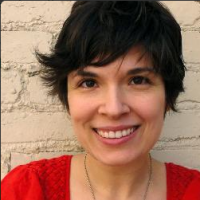The city of Charlotte, North Carolina, has spent $124 million to build affordable housing in the last 16 years, but the city’s most poor still struggle to find safe and affordable housing, a paradox that Charlotte is certainly not alone in facing.
In Charlotte, reports the Observer, population growth and rising land costs have contributed to the city’s 34,000-unit affordable housing shortage, double the number needed a decade ago. But, the Observer says, city decisions have also contributed to the problem.
As the newspaper reports: more than 70 percent of the units built using the $124 million of city Housing Trust Fund aren’t affordable to those with “extremely low” incomes, which HUD classifies as 30 percent of AMI. Some buildings that received subsidies contain no units for extremely low-income households, and in one case the Observer found a building that received subsidies but will charge “roughly” the same rents as market-rate apartments nearby.
Further, city officials counted homeless shelter beds as housing in its accounting, according to the Observer.
Charlotte is hardly alone in struggling to create housing for its most vulnerable. Michael Anderson, director of the Housing Trust Fund Project for the Center for Community Change, told the Observer that trust funds in many cities fail to deliver those units. According to the Housing Trust Fund Project, in 2007, about half of the housing trust funds surveyed target households making 60 percent of area median income or lower; about two-thirds (60 percent) of those funds actually target a lower income range. But only 37 percent give priority to projects that serve the lowest-income households.
This also glosses over the way area median income is calculated: the AMI in the Washington, D.C., metro area in 2017 was $110,300 for a family of four, but that includes the wealthy suburbs. The area median income for the District of Columbia proper is much lower, at $75,506. The District’s Truth in Affordability Reporting Act of 2014 requires the city to report how affordable housing units are based on both the regional AMI and the District’s AMI. Other cities with have similar concerns, as Next City has also written. In other words, stating a project is affordable for people making a certain percentage of “the” area median income may still exclude the city’s poorest.
Anderson says that even if Charlotte’s housing trust fund does not target the very poor, voters should still support the addition of $50 million to the fund, an issue appearing on ballots this November. The fund serves a need and creates jobs in construction, he told the newspaper. But policies that ensure money goes to the very poor would be an improvement, he said. Some cities, like Pittsburgh, require that half of the money from its Housing Trust Fund goes to housing for extremely low-income people.
The city, for its part, says that the concern “is a little overstated,” according to councilmember Ed Driggs, speaking to the Observer. “At 60 and 80 percent of area median income, rents are rising faster than incomes. We tried to take a broad spectrum approach.” However, a consultant for the city told Charlotte last year that its biggest gap is for affordable housing for people with extremely low incomes. The National Low Income Housing Coalition found that for every 100 extremely low-income households in the greater Charlotte area, there are only 34 units of housing, 1 unit less than the national average.

Rachel Kaufman is Next City's senior editor, responsible for our daily journalism. She was a longtime Next City freelance writer and editor before coming on staff full-time. She has covered transportation, sustainability, science and tech. Her writing has appeared in Inc., National Geographic News, Scientific American and other outlets.
Follow Rachel .(JavaScript must be enabled to view this email address)








